Hightouch Integration
Hightouch is a Reverse ETL solution that makes it easy to pipe data from your data warehouse into downstream tools like Correlated. With our destination, you can pull pre-modeled data from your data warehouse directly into Correlated. Also, Hightouch makes it possible for Correlated to smartly infer how your data is important and why it matters so that you can get started with more populated views throughout the Correlated product with limited configuration on your part.
To get started, here's what you should have:
- A Hightouch Account
- Existing Sources that contain the data you want to connect
- A Correlated Account
It's helpful to have existing Models, but you can also connect Hightouch to Correlated first to see what data we support before creating your Models.
Correlated accepts Account and User fields from Hightouch
You can pipe data from Hightouch to Correlated as long as that data describes either an Account or a User. We provide some default fields that you can sync, as well as custom fields.
Note: The entire Hightouch integration can be configured entirely in Hightouch.
Create a Correlated API Key
- Sign in to Correlated.
- Click the Integrations tab in the left bar navigation .
- Find the "Hightouch" card and click Connect.
- You'll be prompted to create a Hightouch API key - Hit "Create."
- Copy the API key displayed.
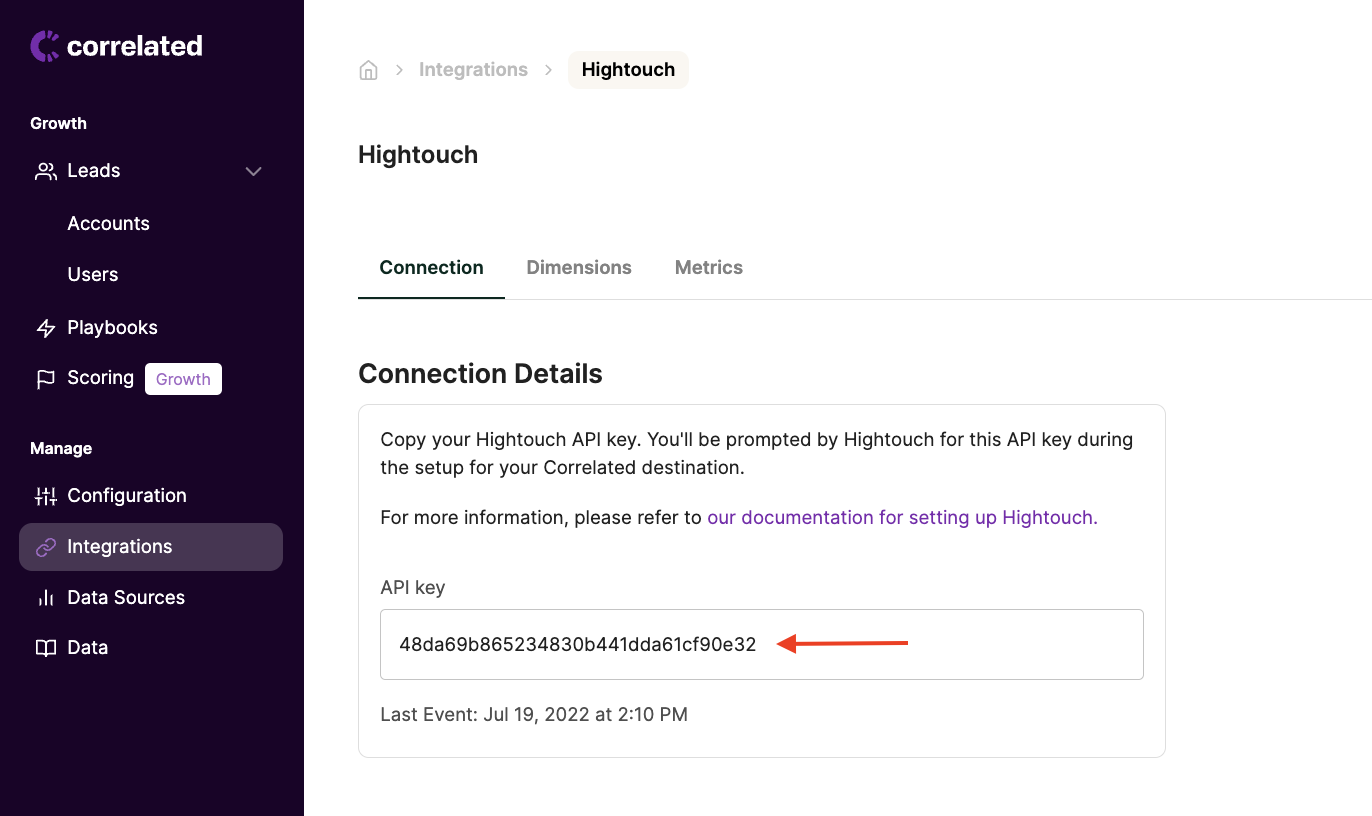
Set Up the Correlated Destination in Hightouch
Now, you're ready to set up a destination in Hightouch.
- Navigate to the "Destinations" tab on the left navigation.
- Click "Add Destination" in the top right.
- Search for "Correlated" and select it.
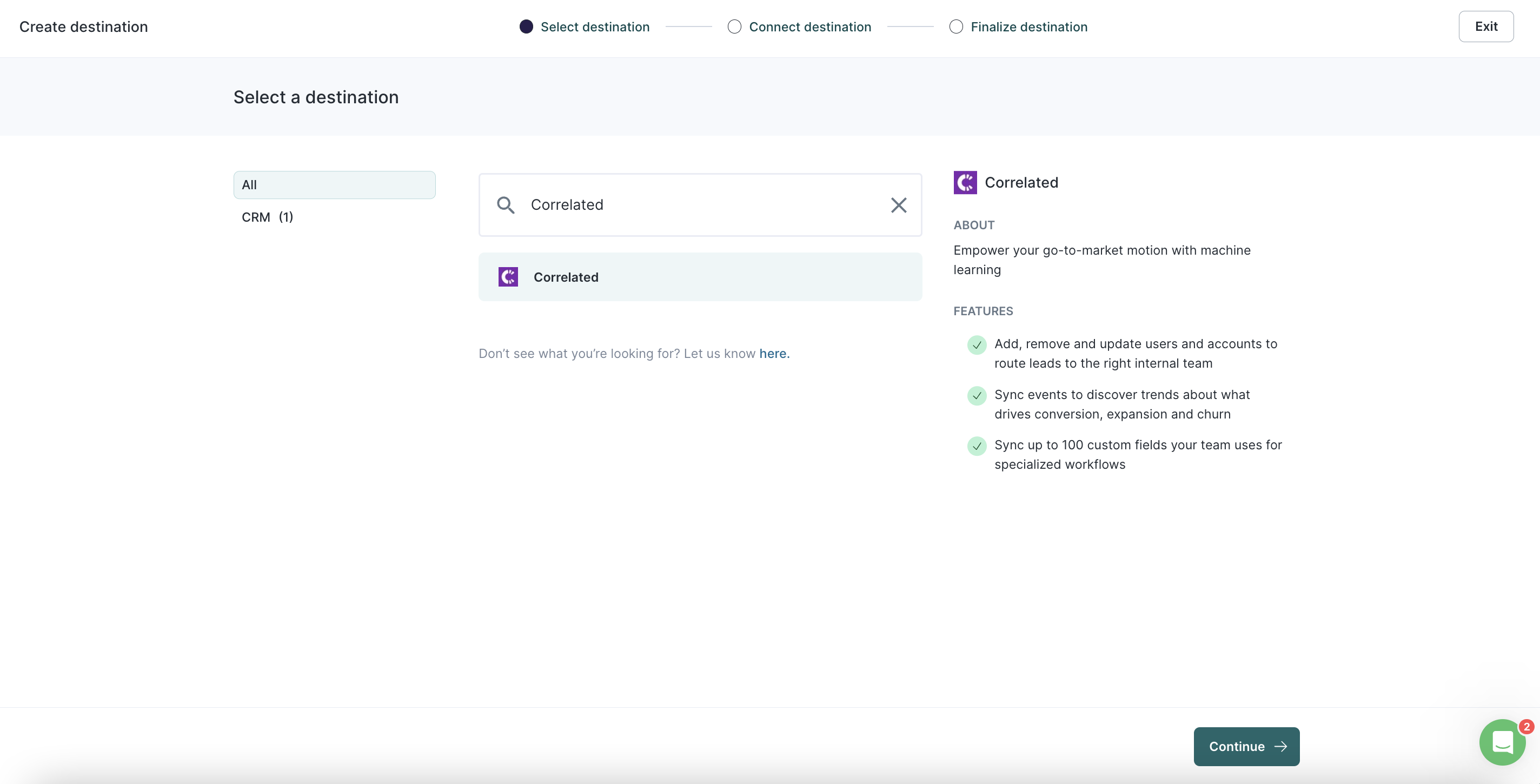
- Paste the API Key you copied earlier from Correlated and click "Continue."
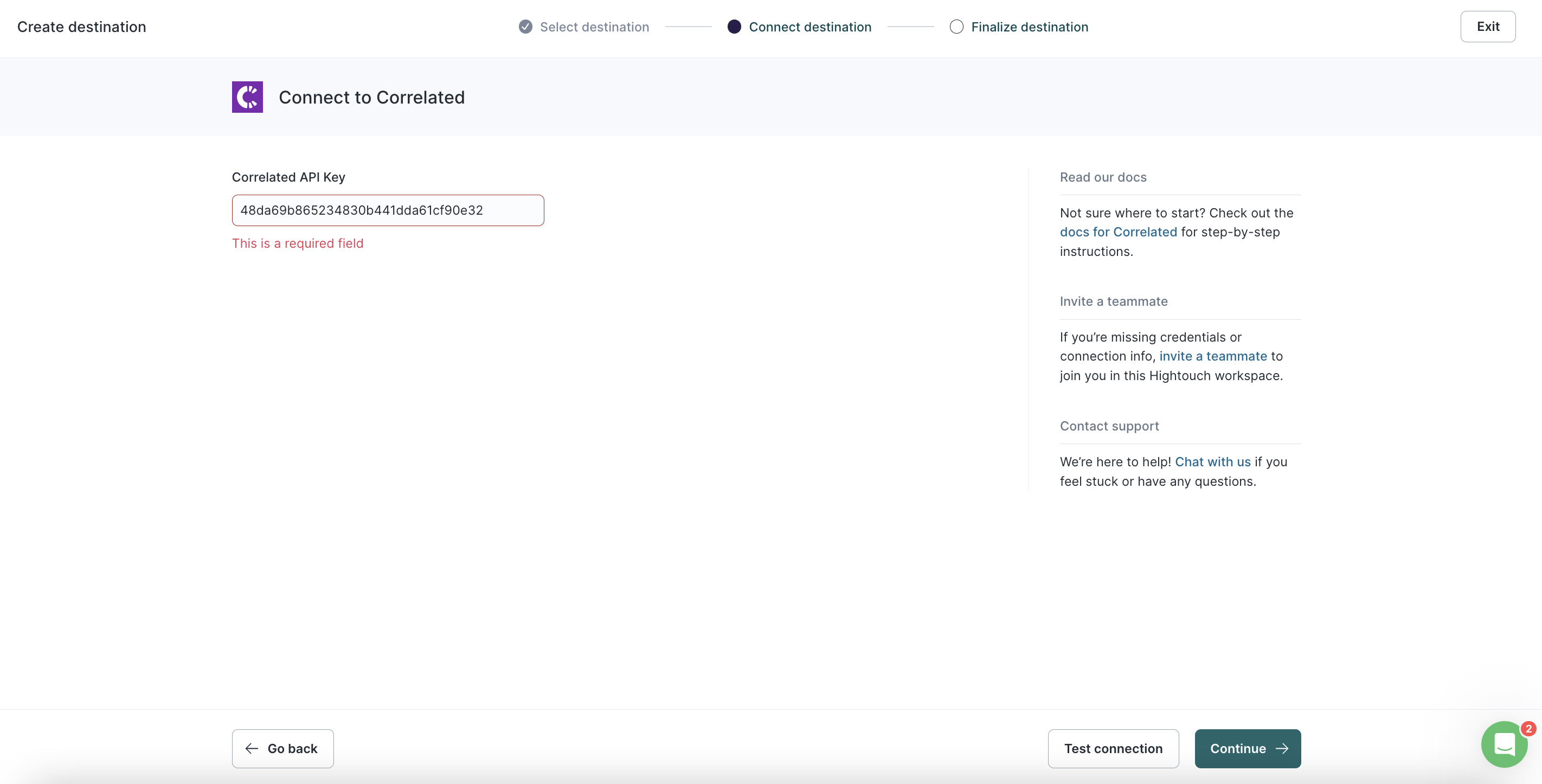
- Finally, give your Destination a name, following the instructions shown in Hightouch, and hit "Finish."
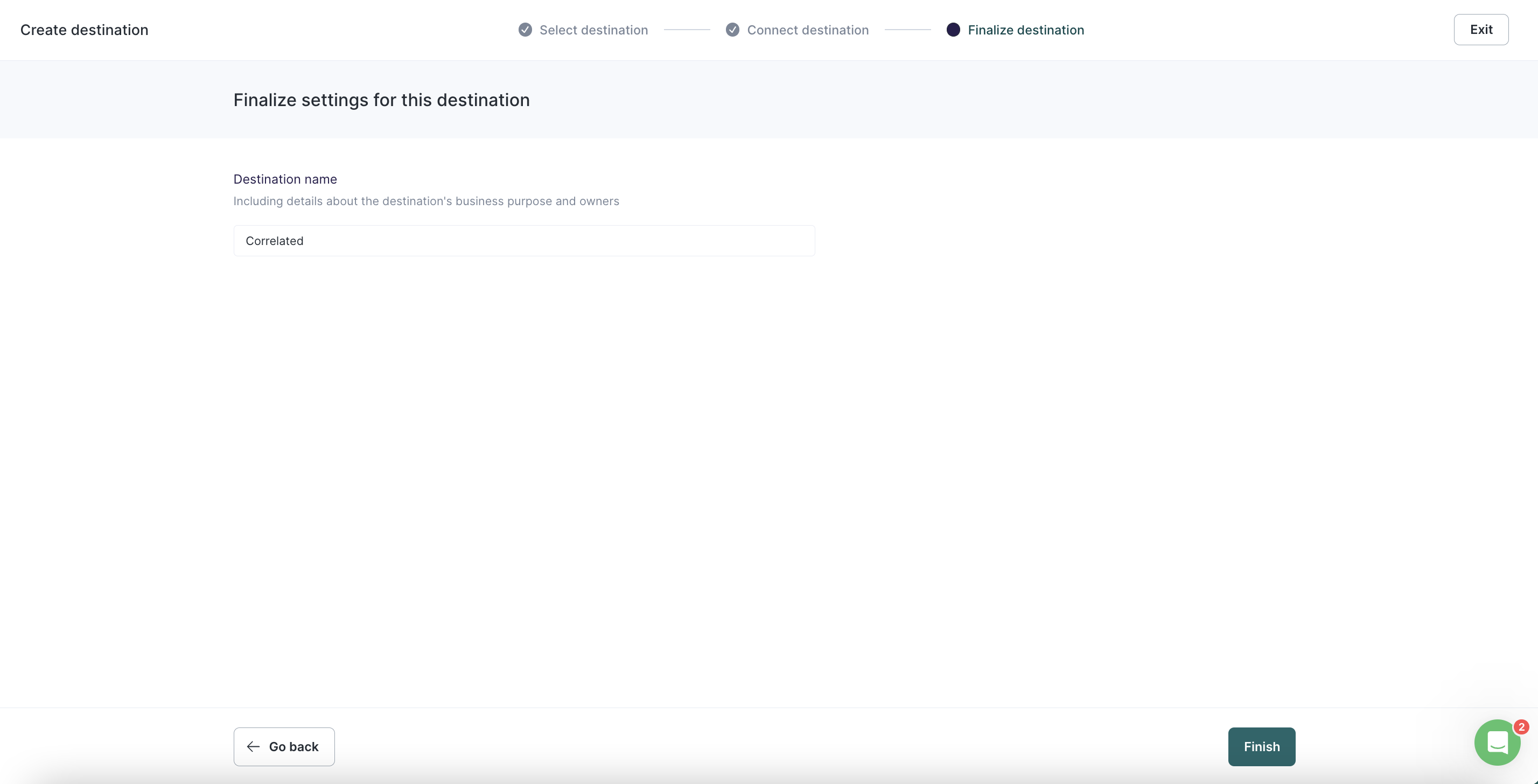
Create a Sync in Hightouch to Pipe Account / User Data into Correlated
- Navigate to the "Syncs" tab in Hightouch.
- Click "Add Sync" on the top right.
- Select the model you want to connect to Correlated.
- Select the object you want to sync to.
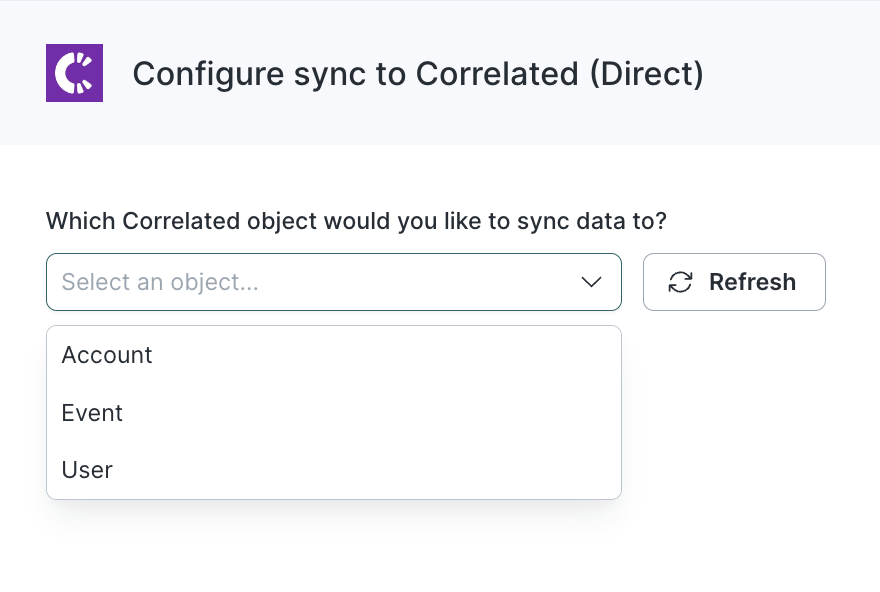
- Continue to follow the prompts in Hightouch until you hit "How should records between query results and records in Correlated be matched?" At this point, you'll be prompted to select your Account IDs or User IDs depending on which object type you are trying to sync to.
Important Note:
- Accounts must be identified with the same Account ID that you are using to identify Accounts in other syncs or data sources
- Users must be identified with the same User ID that you are using to identify Users in other syncs or data sources

- Next, you'll be able to add as many columns as you want and map them to fields in Correlated. These will appear as "Dimensions" in Correlated.
- By default, you must provide a User ID and Email for User objects and an Account ID and Company Name for Account objects. You can also add additional mappings.
- Correlated offers a list of common fields by default, and you can also create custom fields.
Dimensions:
Dimensions describe who the customers are - for example, how many seats they have, what region they are based in, how many employees they have, etc.
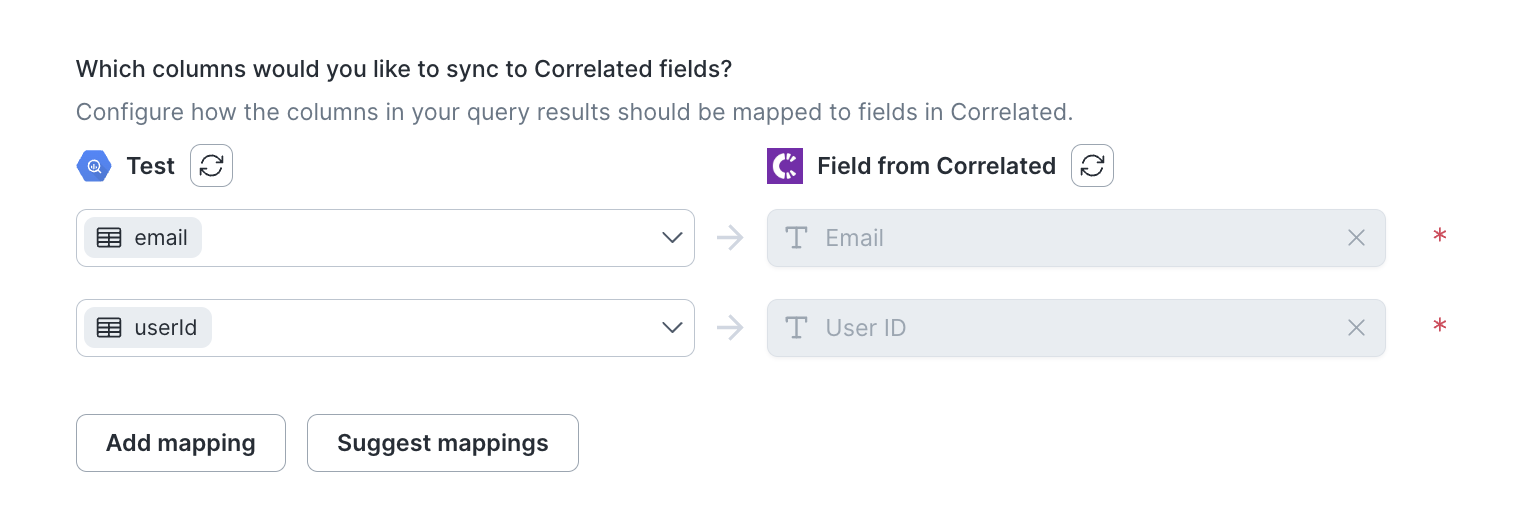
Recommended: Add Account ID in the User Sync
Although not required, it is also highly recommended that you click the "Add mapping" button and add additional mapping to your Account ID in the User sync, in order to properly map user data to accounts. See screenshot below:
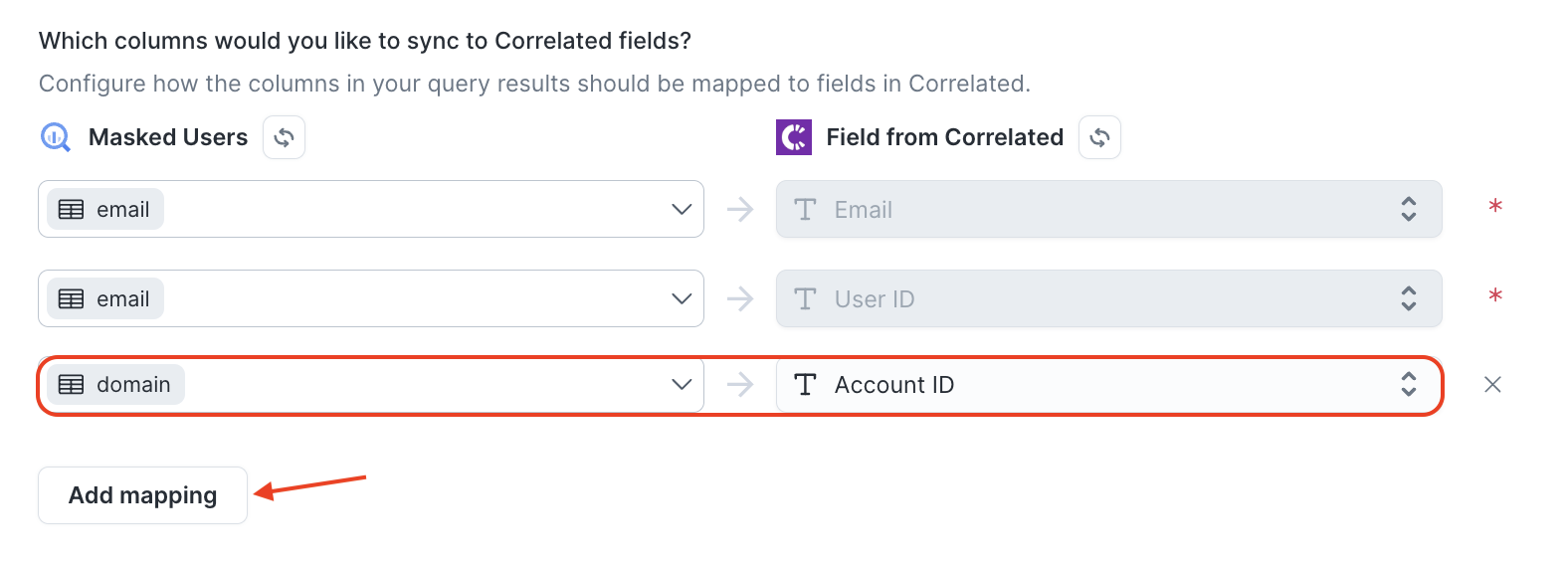
Adding Custom Fields
By mapping your modeled data columns to existing Correlated fields, you'll be able to benefit from out-of-the-box views since we'll be able to leverage the context you are providing to show the most relevant views. However, you can add custom fields to fully customize your Correlated experience. All you have to do is fill in the last step in the Hightouch configuration setup.

Create a Sync in Hightouch to Pipe Events into Correlated
- Repeat steps 1-3 from above.
- When you get to object type, select Event in order to pipe Metrics into Correlated.
- Continue to follow the prompts in Hightouch until you hit "Which columns would you like to sync to Correlated fields?" To configure the sync, we will need:
- A column that contains your Event Name
- A column that contains your Timestamp
- A column that contains your User ID (the same User ID you're using to identify Users from other data sources)
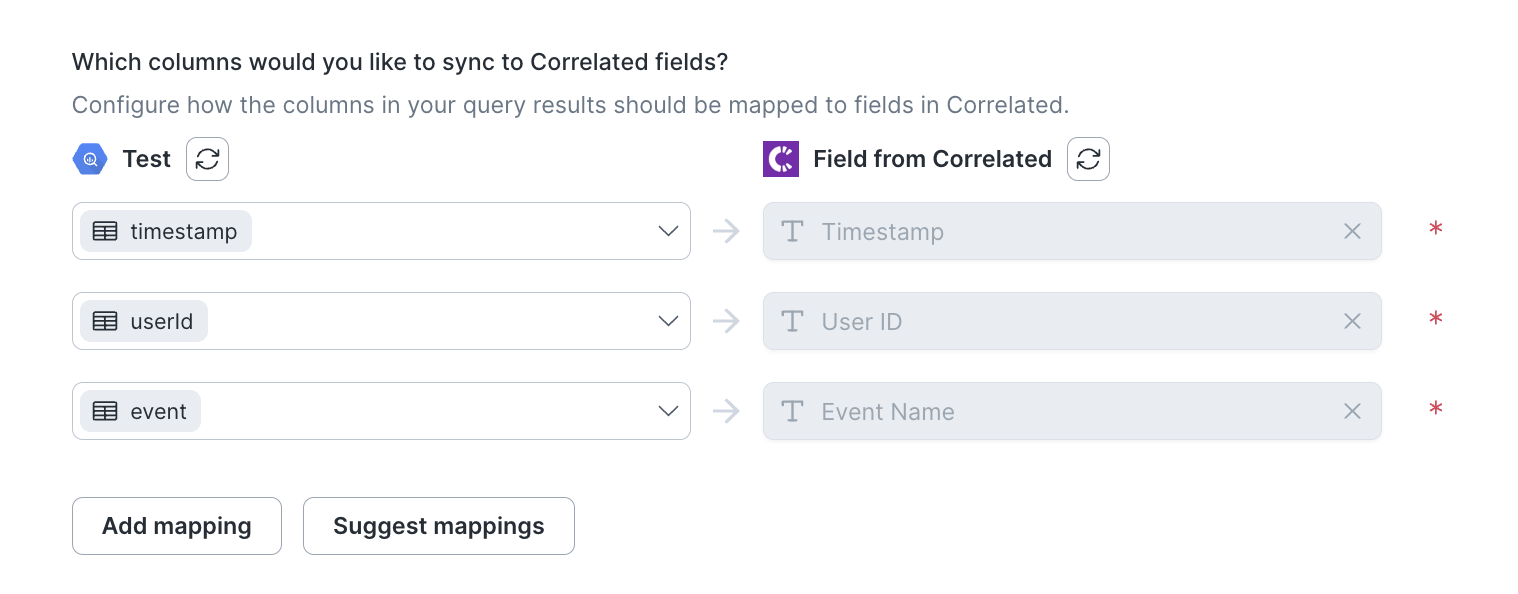
Recommended: Add Account ID in Event Sync
Although not required, it is also highly recommended that you click the "Add mapping" button and add additional mapping to your Account ID, in order to access events on the account level. See screenshot below:
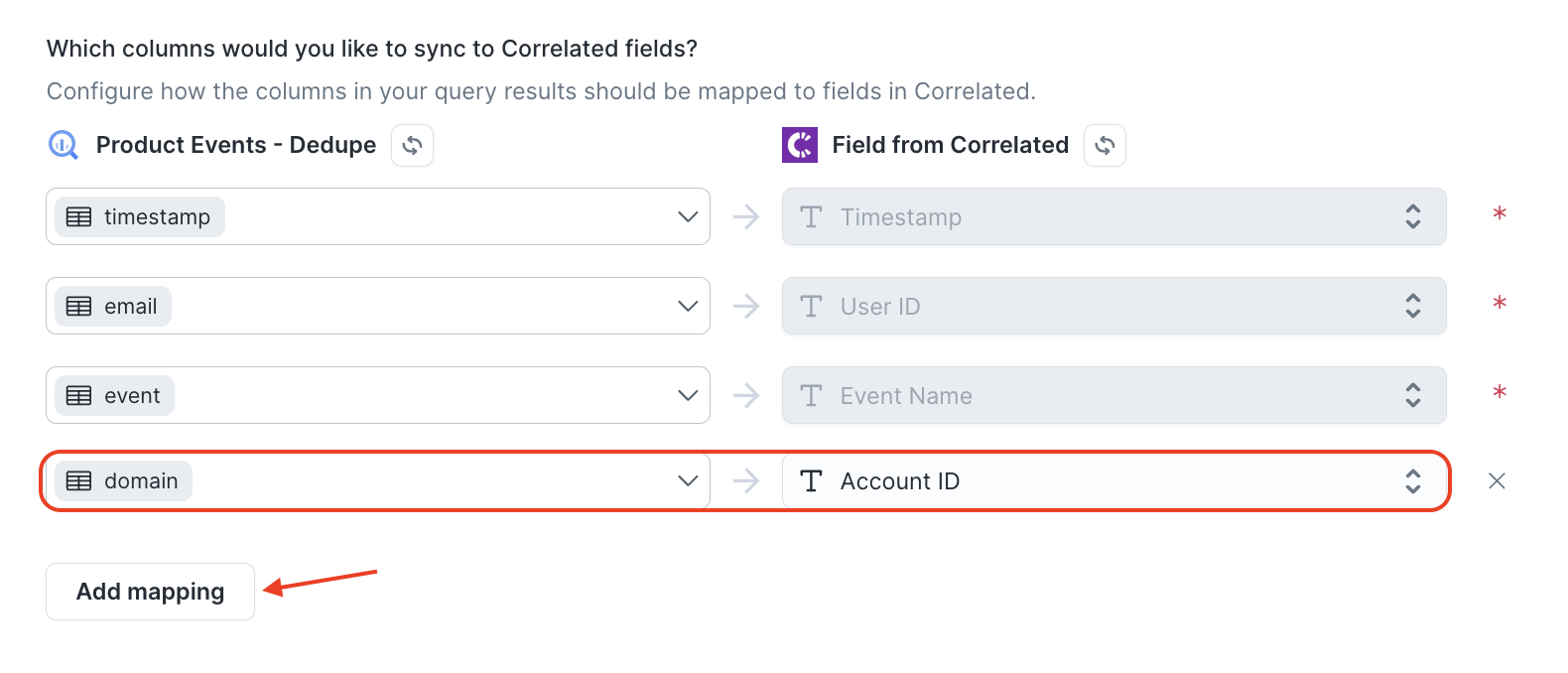
- Next, you'll be able to add as many columns as you want and map them to fields in Correlated. These will appear as "Metrics" in Correlated.
- You can also add additional mappings. Correlated offers a list of common fields by default, and you can also create custom fields - see Adding Custom Fields section.
Metrics:
Metrics describe what your customers are doing in your product - for example, sign-ins, page views, feature usage, etc.
Updated about 2 years ago
